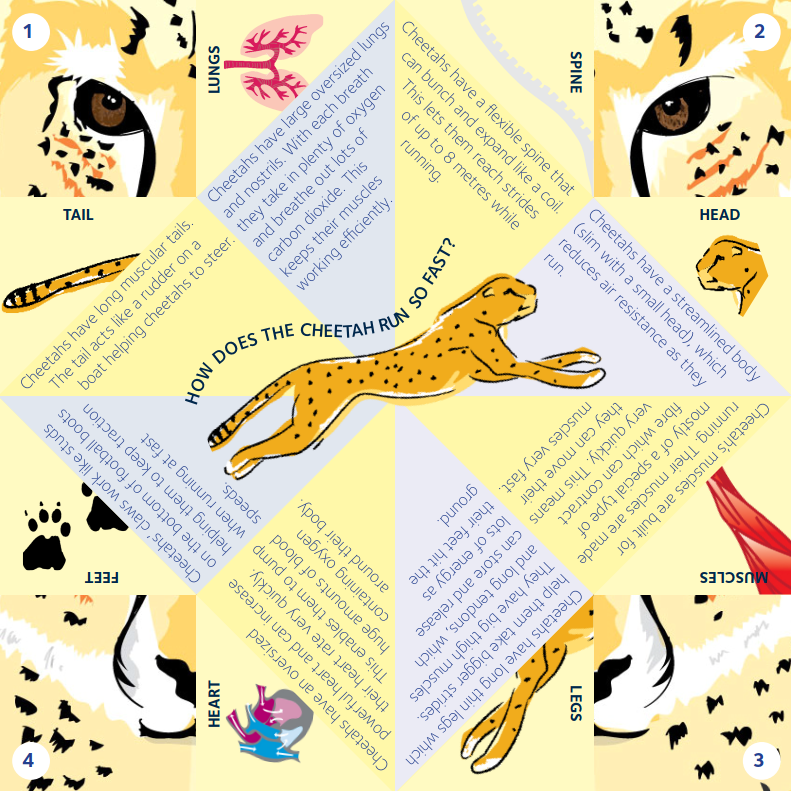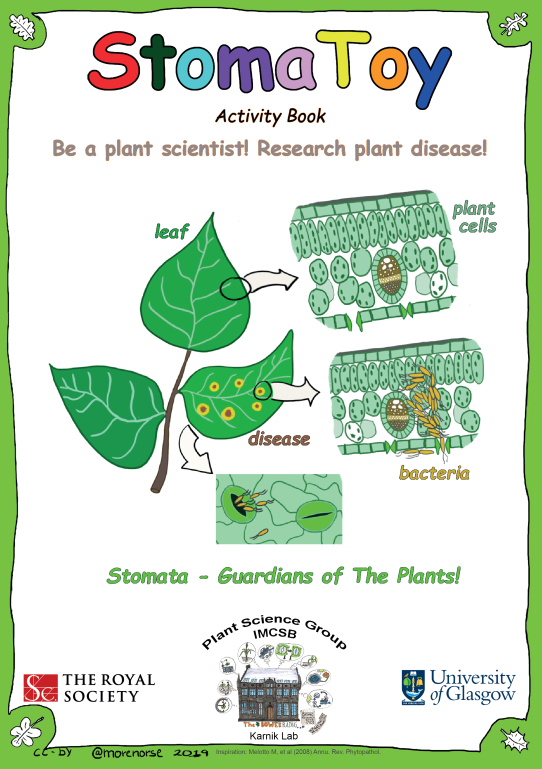Zone 1: Activities and Worksheets
Downloadable colouring book | Association for the Study of Animal Behaviour
The ASAB Colouring Book contains thirteen pages of scientific colouring joy. Learn about murmurations, vigilance behaviour, how bees find food and tell all their co-workers.
Incredible Creatures Activity Book | British Ecological Society
Filled with simple yet fun nature-based activities, this educational activity booklet for 7 to 11 year olds is free to download.
Pathogen Buster! | British Society for Immunology
A game to understand how antibodies fight germs inside the body and introduce the concept of antibody specificity and how vaccines work.
Vaccine memory game | British Society for Immunology
A memory game with vaccine-related objects. Suitable for mixed ages as difficulty level can be modified and for individual or group play.
Juno Island board game | British Society for Immunology
A board game, suitable for 1-3 players ages 7+ to demonstrate the importance of vaccination and identify the different methods of protection from an infectious disease.
All resources are printable or you can have a go at designing your own and following the step-by-step instructions.
Our Heroic Bodies | British Society for Immunology
This collection of scientifically accurate drawings celebrates the unexpected beauty of our immune system at a tiny scale and includes images of our heroic white blood cells and bacteria and viruses for which we have vaccines against.
Mineral Resources Card Game | The Geological Society
Mineral resources are vital for making so many different things from smartphones and computers to satellites and space shuttles.
Download, print and play our card game for 2 – 6 players and learn all about how minerals are used to make the things we use every day.
Make your own brain hat | The Physiological Society
Assemble a colourful wearable hat that shows different parts of the brain.
Cheetah Cootie Catcher | The Physiological Society

Use this fun little fortune teller to learn interesting facts about the cheetah.
How do whales keep warm? | Society for Experimental Biology
How does blubber helps to insulate a Beluga whales’ body in the ice-cold waters of the Arctic Ocean?
Using the SEB Blubber Experiment worksheet, you will learn fun facts about Beluga Whales and why they need to keep warm. You’ll then design your own experiment to test whether fat is a good insulating material.
Download the worksheet here.
Plant Cell Spot the Difference | Society for Experimental Biology
A fun game of spot-the-difference will help you to learn to notice detail – a key skill for any scientist! You’ll also learn about what a plant cell is, all the different parts of a plant cell, and the roles they each play.
Download the worksheet here.
StomaToy | University of Glasgow and Lancaster University
StomaToys activity packs are free-to-download and come with how-to instructions in English, Spanish and Chinese. They include a StomaToy video (3+), a make-your-own StomtaToy leaf cube (4+), and become-a-plant-scientist activity book (6+).
Download the StomaToy activity packs here.

Plants have tiny ‘mouths’ called stomata on their leaf surface which allow exchange of gases and water with the environment.
Like humans, plants have a complex immune system for defence against microbial pathogen or ‘germs’ invisible to our eye.
If we put hands covered in germs into our mouth, we become sick; similarly, pathogen entering the stomata causes infection in plants and can make them sick!
To prevent germ infection, plants close their ‘stomata’ as a first strategy of defence.
The Secret Life of Hedgehogs | Zoological Society London
Download this fun activity sheet and find out more about the UK’s prickliest wild animal, the hedgehog.


